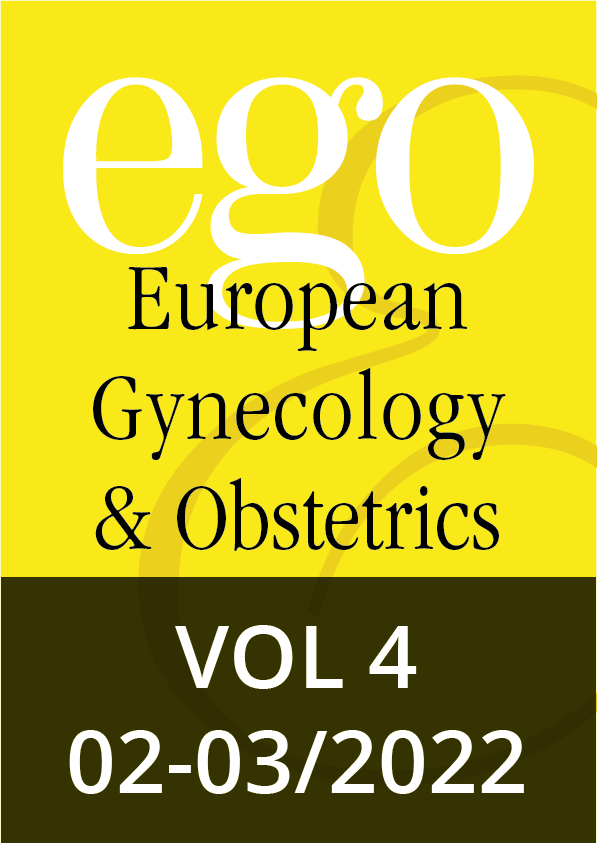Short reviews, 066-070 | DOI: 10.53260/EGO.22402031
Reviews, 071-075 | DOI: 10.53260/EGO.22402032
Case reports, 076-078 | DOI: 10.53260/EGO.22402033
Case reports, 079-081 | DOI: 10.53260/EGO.22402034
Case reports, 082-085 | DOI: 10.53260/EGO.22402035
Original articles, 086-094 | DOI: 10.53260/EGO.22402036
Original articles, 095-0102 | DOI: 10.53260/EGO.22402037
Original articles, 103-105 | DOI: 10.53260/EGO.22402038
Original articles, 106-111 | DOI: 10.53260/EGO.22402039
Original articles, 112-116 | DOI: 10.53260/EGO.224020310
Rationale of fetal intrauterine resuscitation during labor
Abstract
Cardiotocography is a non-invasive technique used for monitoring fetal heartbeat and uterine contractile activity. Fetal
heart rate tracings are usually classified into a three-tiered system, in which there is a category II intermediate class with
low probability of hypoxia and acidosis. Intrauterine resuscitation techniques are a series of promptly accessible interventions to promote fetal well-being. They are useful in case of a category II fetal heart rate tracing and in other selected
cases. In case of fetal heart rate alterations, an individualized approach should always be adopted to tailor the intervention to the mother and the fetus. In this review, we analyze the pathophysiology of some frequently used intrauterine
resuscitation techniques - tocolysis, maternal repositioning, and the administration of oxygen and intravenous fluids - to
clarify their mechanisms of action and the clinical situations in which each one of them should be prioritized or should not
be applied. Furthermore, we explore ongoing controversies over some intrauterine resuscitation techniques.
Keywords: Fetal heart rate, fetal monitoring, fluid therapy, labor, obstetric, oxygen inhalation therapy, tocolysis
Citation: Abati I.,Lucarelli S.,Martini M., Romani E.,Di Tommaso M.,Petraglia F., Rationale of fetal intrauterine resuscitation during labor, EGO European Gynecology and Obstetrics (2023); 2022/02-03:066-070 doi: 10.53260/EGO.22402031
Published: May 22, 2023
ISSUE 2022/02-03

Short reviews, 066-070 | DOI: 10.53260/EGO.22402031
Reviews, 071-075 | DOI: 10.53260/EGO.22402032
Case reports, 076-078 | DOI: 10.53260/EGO.22402033
Case reports, 079-081 | DOI: 10.53260/EGO.22402034
Case reports, 082-085 | DOI: 10.53260/EGO.22402035
Original articles, 086-094 | DOI: 10.53260/EGO.22402036
Original articles, 095-0102 | DOI: 10.53260/EGO.22402037
Original articles, 103-105 | DOI: 10.53260/EGO.22402038
Original articles, 106-111 | DOI: 10.53260/EGO.22402039
Original articles, 112-116 | DOI: 10.53260/EGO.224020310
